Over the last few months, I have tried a handful of different monitor light bars for my desk setup. These devices are designed to easily attach to your monitor and provide more focused light where you need it. During this time, I have really grown to love them and I think that you will too. Before we get into the reviews, here is a little more information about how they work and the benefits they provide.
Full Disclaimer: We are an office furniture dealer and sell some of the products we review. To learn more about the products we sell, our review process and why you can trust us, please visit: Why we’re different. Who is BTOD.com and The Breakroom Blog?
Cheap Vs. Expensive Monitor Light Bars
- Why You Should Use a Light Bar
- Sn-okylife Light Bar
- Baseus Light Bar
- BenQ Light Bar
- Solutions for Alternative Monitor Setups
1. Why You Should Use a Light Bar
The monitor light bars I have been using provide a more efficient light source directly where I am working. They also free up desk space and help create that minimalist feel that I am always striving to achieve. When using small table lamps or task lamps in the past, I could never quite position them just right and they simply took up too much space on my desk. As I found, some of these light bars can get quite pricey and if you are using a dual monitor setup or an iMac or camera, not every light bar will work as well. In addition, light bars aren’t designed to be your only source of lighting, so if you are working in an especially dark space, you will still want additional overhead lighting to optimize your environment.
Now, let’s take a closer look at the three light bars I have been using to see if one of them might be a good fit for your desk setup.
2. Sn-okylife Monitor Light Bar
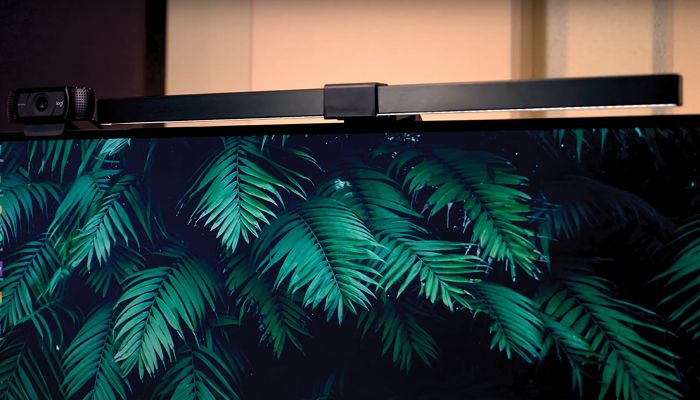
At just $16, the Sno-okylife, this product is the least expensive option I have been testing. To be honest, this light is good enough that I have been using it at my work office setup for months. It uses a heavy adjustable weight system to hold it in place on my monitor and closely resembles many of the more expensive models I have tested.
As with most light bars, it uses a simple USB-C plug to power to prove power to the unit. There are three different light modes to choose from: light, warm, and natural. You can easily adjust the light mode using the buttons on top of the bar. There are also five different brightness options to adjust to your specific needs.
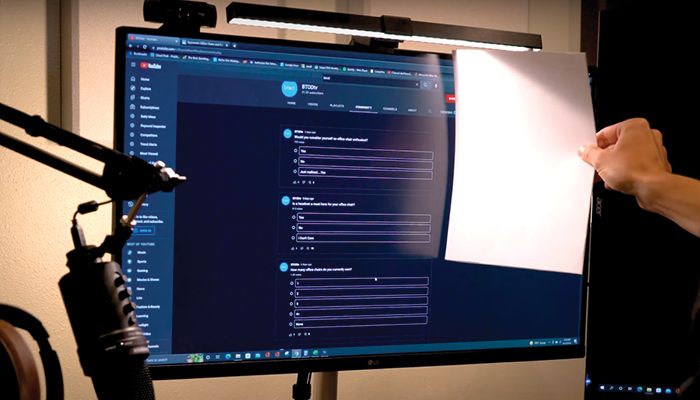
Overall, I think it has the features to meet practically anyone’s needs, but I did notice some differences when compared to the more expensive lights. First, the body of the light feels lower quality and doesn’t look quite as sleek as the other options. It also uses actual buttons rather than touch sensors that are to control the light mode, brightness, and power. This can be a bit of a nuisance since the light bar tends to move when you press the buttons.
The last thing to note is that you have to position the bar up and outwards to prevent it from shining directly onto your screen.
3. Baseus Monitor Light Bar
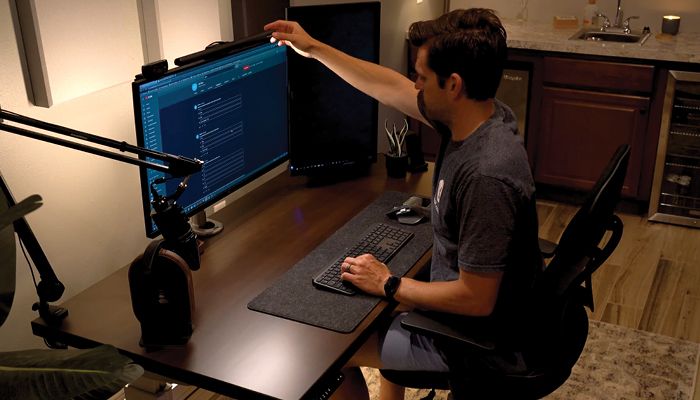
This second light bar provides much more quality than the Sn-okylife for just a little more money. The Baseus is twice as much as the Sn-okylife, but still quite a reasonable price. It also uses a weighted system to secure the light bar in place, but the actual shape of the design is quite different. I found it to be a great fit for my thin, flat monitors. The pivoting head feature helps to aim the light once it is attached to the monitor and it offers a ton of range.
The Baseus is also the first model I test that offers three different touch sensors. There is one for turning it on and off, another to adjust the color setting, and the last to control the dimness of the light. The three color setting options are warm, neutral, and cool light. Stepless dimming feature that offers brightness from 100% all the way down to 5%. The touch sensors definitely made it much easier to make adjustments without actually moving the bar.
While I did enjoy the Baseus, it isn’t quite perfect. The asymmetrical light that is advertised by the brand doesn’t work as well as the BenQ, which we will look at next. In fact, there really isn’t a hard dark line created as they depict in their features section. In addition, the touch sensors weren’t as sensitive as I would have liked and the dimming button, in particular, took quite a while to get dialed in and if you want to change it frequently, this can be especially annoying.

Lastly, the mounting system won’t work well with monitors that are similar to an iMac and have a rounded back. Keep this in mind if you have this style of monitor.
4. BenQ Monitor Light Bar
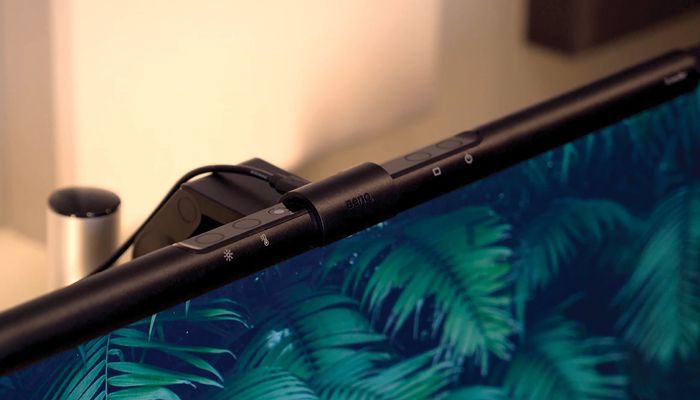
While the BenQ is the most expensive option, I also think that it is the most well put together out of the options I have been using for the last six months. Considering that this model costs over $100, I would certainly expect that it would provide the level of quality to match.
To start with, the BenQ definitely provided the best fit with its weighted system that can accommodate a wide range of monitor sizes and shapes. The BenQ also offers a ton of flexibility with its light color options and has eight different 2700k 6500k and 15 levels of brightness along with an auto-dimming feature.
One of the biggest issues I have had with the other light bars I have tested is the glare the light creates on the monitor. The BenQ is the only one I found that creates a hard line so that the light bar doesn’t spread the light to the screen. I thought this was an amazing feature and might make the light worth the price to you as well.
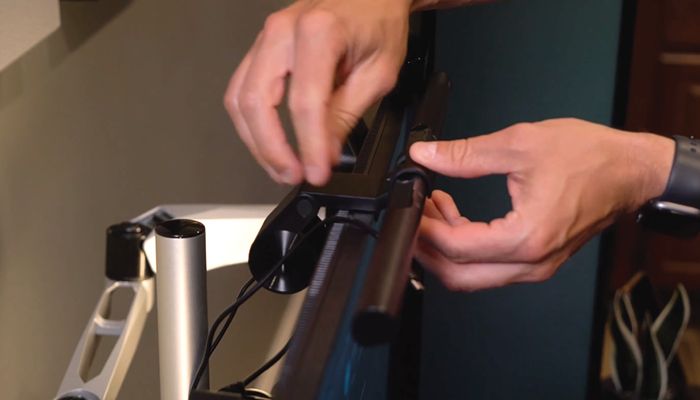
If aesthetics are one of your main priorities, the BenQ is just better put together overall. You can see from the button set to the structure of the aluminum alloy, that it has a really high-end product look and feel.
Ultimately, the BenQ is by far the best product I have found. I want to find a problem with it, but if you have the money in your budget, I really don’t think that you will be disappointed with its performance.
5. Solutions for Alternative Monitor Setups
After testing these three products, I was curious about what types of products might be available for those of us who use dual monitors, curved screens, or maybe something that didn’t attach to the top of the monitor, but provided a similar experience.
I did some searching and decided to purchase the EppieBasic, which is absolutely massive and clamps directly to the desk. While I really enjoyed how much light it provided, especially with the unique monitor setup I use, my biggest grip is just how ugly it felt. Adding another clamp system to my desk just didn’t provide the right look, so my search continues.
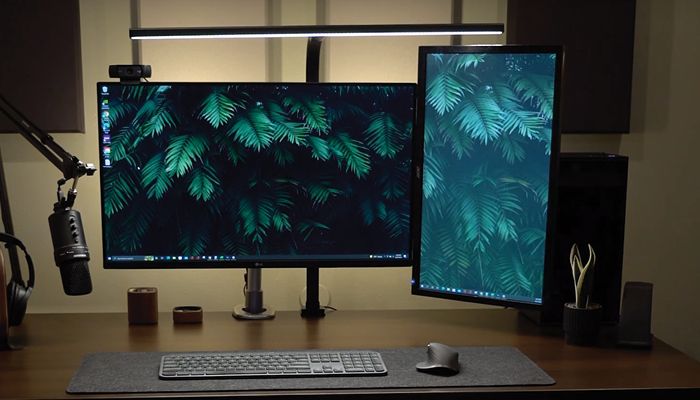
Next, I plan to purchase a curved light bar to try out on my curved 32” screen at work, so stay tuned for those results.
Additional Office Chair Resources






Minotaurus
Monitor light bars are such a rip off, just stick to a proper high-quality desk lamp.
Yes, they take up more space and perhaps you may need one on either side, but they are still much more cost effective than a $200 light bar and are guranteed to last longer and have less points of failure.
I still have a relatively cheap desk lamp that I bought from Amazon over 4 years ago; other than the text for the touch controls fading, it is perfectly functional and still very useful.
A lot of people seem to be concerned about completely inconsequential matters nowadays, and it is really bizzare.
Tracy Bueller
As far as the ugly clamp goes, look into incorporating the stand with the vesa mount points on the back of the monitor. Even if they are already used, you can slip another thin bit of metal in there, worse comes to worse youll need a slightly longer bolt.
The thing to remember with the whole ‘cheap vs expensive’ debate is just about everything these days is made in the same handful of factory districts in China. This is why you find what looks like the exact same product, just without the branding, and usually different often worse performance on some level. The items that use the high dollar components, known as binned as they are compared to a known sample (for LEDs they have a lit LED over a set of bins, the run of LEDs are tested and if they match they go in the bin, a bag of unbinned blue LEDs can be anywhere from hyperblue to teal almost blue-green), or go through rigorous quality assurance and production standards get shipped to the big brand for marking and packaging. However not everything that comes off the line will meet those standards, but otherwise will be perfectly working. On top of that, the production plant may have filled the order but that doesn’t mean that they are out of components. They may grab another plastic mold and run off a bunch of pieces so that they can use up the extra PC boards and/or components they have left over. Again these also usually go through some level of quality grading, and the higher quality ones will go to the mid-range or lower range priced items from companies that just kind of pop up and disappear, the lowest of the low get sold effectively factory direct to places like wish.com where it’s a crapshoot if you’re going to get a functional product or not.
Its sort of like food stuffs and store branded things, when cleaning out the production equipment or running up a new batch there might be slight variations in what the production line produces, or an issue with ingredient matching that isn’t caught until you’ve already made a few thousand gallons of mustard. Now, that is still perfectly edible mustard however they are making a run to fill an order for Frenchs and if it does not exactly match Frenchs mustard quality standards in taste, appearance, viscosity, etc, it is not Frenchs mustard even though it is edible mustard. So the factory will sell this off run to anyone who wants to buy 5,000 gallons of mustard, after all they used their mother ingredients to produce it, they had to use electricity for the machinery, pay workers, there is a cost associated with this perfectly edible mustard that they cannot ship to Frenchs. And it’s not like they’re going to shut down the factory once they fill this one order, they’re going to keep making mustard just not Frenchs mustard. So this not-Frenchs-mustard is sold off, then labeled with your local store brand (Kirkland at one time was a big buyer of off-run stuff now they make their own orders although they allow some variance) and it appears on your shelf as a yellow bottle that just says “mustard” across it. This is why Frenchs mustard always taste the same but the store brand will kind of vary in quality and flavor over time. The same thing is also happening in liquor production, Fireball and Aftershock are both produced in the exact same plant in Maine using the exact same machines, and filled from the exact same mother batch of liquor. They get shipped whatever brands bottles are part of that run they mix up the flavoring agents put it in the bottle and ship it out.
I ordered a Bluetooth speaker off wish.com that was a steal and the only problem with it was that when they programmed the little voice to tell you that it was connected or the informational beeps when changing mode it was accidentally programmed at maximum volume, and because they use a one-time programmable chip there is no way to fix that other than removing the chip from the board programming another chip and resoldering it to the board. Which most factories don’t have the production line set up to do, and are they really going to do that for a couple thousand units… No, just sell em at cost plus whatever you can get out of em. Now I have a damn fine BT speaker that was $20 cheaper than the exact same product being sold under a bigger name at Target with corrected notification beeps. I’m the kind of person that has a good handle on what it takes to build a properly functioning electronic so when ordering from wish.com I feel at the very least confident that what I’m paying for is at least worth it in parts because if it doesn’t work I’ll just break it down for the component pieces anyways and add them to my parts bins for projects and repairs.
All of that being said there is some benefit to looking into the low cost non-branded factory direct electronics. You can save quite a pretty penny on purchasing what is effectively the bigger named item in a slightly different case with a slightly different display, or slightly dimmer LEDs in the case of the very first image of a light in the list. However it is important to have a good handle on real world realistic production practices if you intend on actually getting a deal versus getting fleeced. Of course the other side of that issue is items where you’re pretty much buying the label, yes quality assurance does count for a lot but at some point you’re just buying it because it says Ankor on the side (as a for instance, as far as I know Ankor is not one of those brands that overcharges for just their logo. In fact I have a few USB charging cable sets from them that I absolutely enjoy).